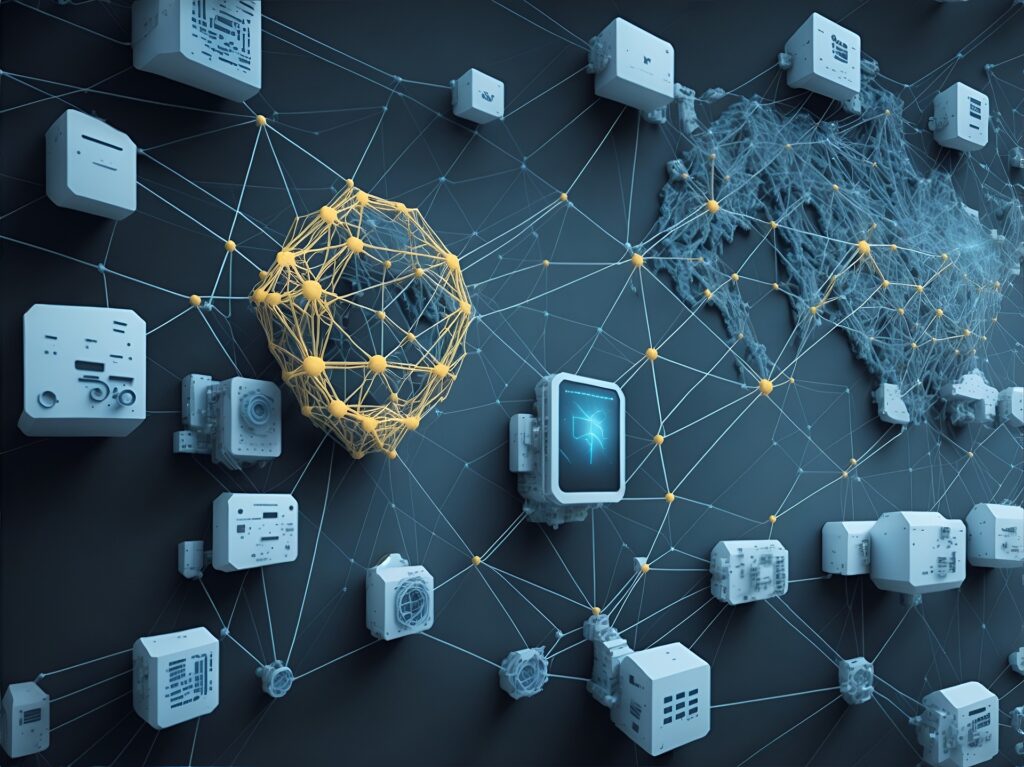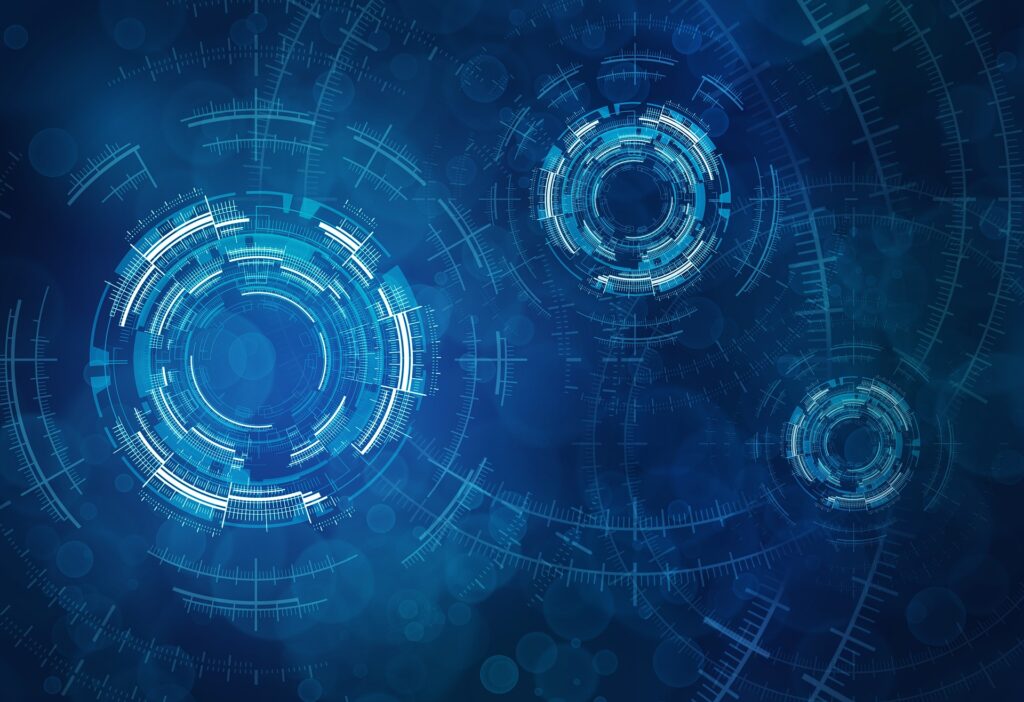IoT on the Edge: The Future of Smart Devices and Data Processing
26 February 2024
26 February 2024
For long, the cloud has been treated as an essential component in IoT infrastructure. However, as technology advances, businesses are looking for more efficient ways to store and process data. IoT on the edge is emerging as the next big thing in the world of embedded technologies. But is it just another buzzword or a real breakthrough? Let’s explore the topic in greater detail.
Bringing computation and storage closer to where data is generated, IoT on the edge solutions create enormous opportunities in virtually any industry, offering better data control, reduced costs and faster insights.
In fact, experts estimate that, by 2025, 75% of data will be processed at the edge, compared to only 10% in 2018. At the same time, the value of the edge computing market is expected to surpass USD 155.90 billion in 2030.
In this article, we’ll explain what it means for your business and how to make the most of IoT on the edge.
For the past two decades, organizations have been transitioning from traditional company-owned hardware and software to cloud service models. With its storage and processing capabilities, the cloud for long seemed to be indispensable.
However, the cloud performs well only with a limited number of connected devices. As the number of devices, and ultimately the amount of data sent to the data centers increases, it fails to provide real-time response. With 29.42 billion total IoT devices expected to appear in the market by 2030, pressure on solutions that rely exclusively on the cloud will increase dramatically.
On top of that, there are numerous issues related to cloud performance, security and scalability. Likewise, the emergence of new connectivity technologies such as 5G and 6G alongside advancements in AI and machine learning require new, high-performing solutions.
IoT on the edge brings data processing as close to its source as possible. It’s achieved through the use of edge devices and edge gateways that filter and process the data locally rather than send it to the central server. Reducing latency and response time, the technology provides a powerful way to analyze data in real time.

IoT on the edge has a number of advantages over traditional cloud-based solutions:
Most IoT solutions work as advanced monitoring systems: they collect data, generate insights and perform suitable tasks. This can be done hourly, daily or when triggered by specific actions. IoT on the edge delivers those insights in real time. When data collection and analysis take place in a physically closer location rather than in a large data center, the data doesn’t need to travel back and forth.
This way, network latency can be reduced from hundreds of milliseconds to even a few milliseconds.
The technology enables faster, timely decisions and automatic task execution. For example, in a factory, a system can lower the temperature as soon as it detects that a sensitive piece of machinery starts to overheat.
Keeping latency to the minimum, IoT on the edge also paves new ways for projects enhanced with AI and machine learning algorithms. Instead of streaming all raw data to the centralized cloud, edge devices make the decisions close to the source of data and trigger resulting actions right away.
In our previous article, we showed how neural networks applied at the edge can immediately process large amounts of unstructured data generated by sensors and perform accurate real-time analysis.
By pre-processing and filtering data closer to the devices, IoT on the edge ensures that only data needed for longer storage or analysis is transmitted to the central management platform. In other words, you back up only relevant information. This allows for optimizing bandwidth usage and cloud storage resources, decreasing infrastructure costs.
Centralized IoT systems are an attractive target for hacker attacks. Not surprisingly, minimizing the risk of data breaches is a new priority for businesses. In fact, developing cybersecurity solutions has emerged as one of the main trends in embedded systems.
IoT on the edge helps to secure the network and enhance data privacy. In such a system, data is distributed among source devices, making it more difficult to bring down the entire network or capture all data with a single attack.
The model is also favored in the light of GDPR compliance as less information is transmitted and stored in the cloud. Especially in the situation when edge servers are located on the company premises, data remains within the local area and access to all servers can be fully controlled.
Edge devices can work autonomously without an internet connection. Even when a network connection is lost, systems continue to operate offline, decreasing the risk of data loss or delays.
IoT on the edge also offers improved scalability when compared to traditional cloud-based solutions. As workloads are distributed across multiple local devices instead of just one server, you can scale up your IoT network as needed without worrying about available storage.
It gives you greater flexibility, especially for projects when the volume of data or number of devices is expected to grow over time or requirements are likely to change.
The need for real-time decision-making is bringing IoT on the edge to more and more industries. Let’s look at a few examples.
According to McKinsey, travel, transport and logistics is the industry with the most use cases for edge computing. The most prominent example is, of course, autonomous vehicles.
As found by Intel, a single self-driving car can generate up to four terabytes of raw data per day. This data can’t be simply sent to the cloud for processing if the moving vehicle needs to decide when to stop. Such decisions need to be taken immediately and regardless of the quality of the internet connection.
Interestingly, one of the first use cases for autonomous vehicles is likely to be automated truck convoys where the driver still retains a certain degree of control. Only the first truck will require a driver who will set the speed and route. Other vehicles will follow automatically, saving fuel costs and decreasing congestion.

Health monitoring and wearable devices are common applications of IoT on the edge in healthcare. They keep track of patients’ conditions and can instantly alert family members or medical personnel if help is needed.
For example, research on the COVID-19 Patient Monitoring system has proven IoT on the edge useful in determining if and when an infected patient should be hospitalized. The system remains functional even without network connectivity. In addition, local data analysis relieves the computational load on the hospital systems during pandemics.
Another application is robot-assisted surgery when every nanosecond can decide between life and death. Such robots need to be able to quickly analyze data on their own to provide accurate help.

It’s crucial that surveillance systems respond to threats within seconds. Edge-based video analytics enables immediate action, enhancing safety across a variety of industries.
With on-device video processing, security cameras can detect motion, differentiate between harmless movements and suspicious activity and send real-time alerts to users. Because the system doesn’t transfer raw data to the servers for processing, it also allows for optimizing bandwidth and storage.

The short answer is: no. The technologies are not mutually exclusive. Instead, they can complement one another. Despite the rise of the edge, there still will be a need for centralized data processing.
Edge computing is great for processing time-sensitive data. It’s also an optimal solution for remote locations with limited or no connectivity. On the other hand, the cloud provides storage, backup, coordination and more processing power. Larger, more complicated IoT projects will require a combination of both.
However, with so many companies already transitioning some or all of their workloads to the edge model, we can expect a sustained trend toward decentralized data storage and analysis in the future.
Despite the rise of the edge, there still will be a need for centralized data processing.

Whether you’re planning to invest in IoT development or improve your current products, start with a reliable technology partner by your side. Tronel’s solid expertise in developing IoT on the edge solutions will guide you through the process seamlessly.
Contact us for a free consultation on how to get started with your IoT strategy.
By Monika Wozniak

